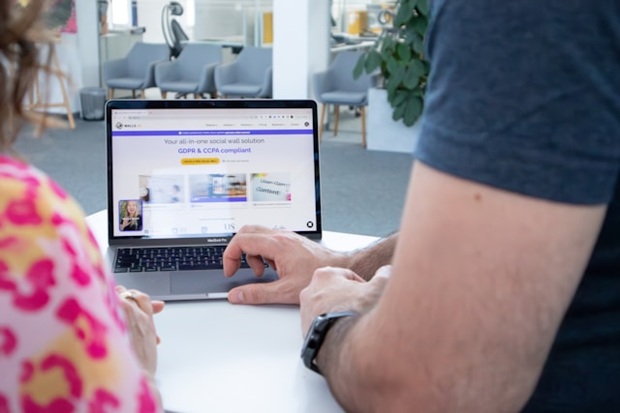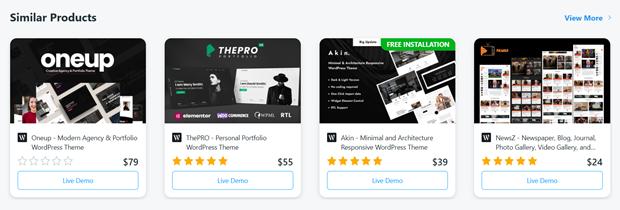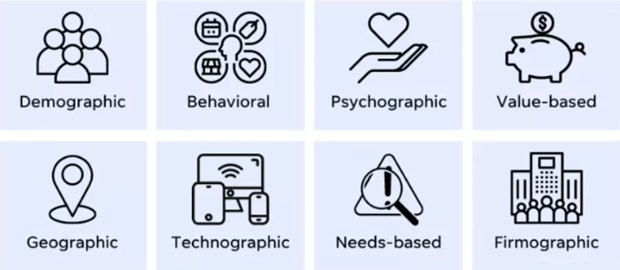Website Personalization Strategies That Help Win Repeat Visitors

First-time visits rarely lead to long-term engagement without a more personalized experience. Many websites still serve the same static content to every visitor each time.
But what if your site could respond to who someone is or what they need? What encourages a casual browser to come back again and again? How do small changes lead to stronger trust and user loyalty? What role does local SEO or content structure play in creating return visits?
As user expectations grow, generic digital experiences struggle to hold attention. Personalization is no longer just a trend. This article will explore some effective strategies to personalize your site and bring visitors back.
Use Visitor Behavior to Shape Onsite Content
User behavior provides a foundation for delivering more relevant onsite experiences. Websites can track which sections a visitor interacts with most often. For returning users, prioritize content they explored during previous visits.
Showing preferred services or categories can improve site navigation and engagement. Sidebar elements or homepage blocks can shift based on interaction patterns. Analytics tools like heat maps help identify what content draws consistent attention.
TechTarget notes that a heat map shows where users click, tap, or stop scrolling on your website. It reveals behavioral patterns like navigation paths and which sections hold the most attention. These insights help identify friction points that might be driving users away too soon. Site owners can use this data to reduce bounce rates and increase conversion opportunities.
Personalized layouts remove unnecessary distractions and increase content discoverability. When users feel remembered, they build trust and stay longer. A more intuitive experience encourages them to return and explore even further.
Why do exit pages matter for website personalization?
Exit pages indicate where users disengage even after initial interest in the content. Knowing these touchpoints helps identify mismatches between expectation and delivery during browsing. Reworking those areas with clearer value or related options can extend site sessions and encourage revisits.
Personalization Tactics That Speak to Local Audiences
Websites that respond to where a user is located feel more intuitive. Visitors want content that reflects their environment and speaks directly to their needs. Highlighting nearby office locations, service availability, or locally relevant testimonials builds trust quickly. Local reviews, contact details, and maps increase user confidence and dwell time.
These adjustments also support stronger local SEO rankings and visibility in search results. Including regional keywords in headlines and body text improves organic traffic over time. Structured data tags help search engines understand and serve location-specific content better.
Google states that structured data helps your pages appear as rich results in search, boosting engagement rates. Rotten Tomatoes saw a 25% higher click-through rate on structured data pages versus standard ones. The Food Network converted 80% of its pages and gained a 35% increase in visits. Nestlé reported an 82% higher click-through rate for pages showing as rich results.
Let us consider the example of Franklin, North Carolina, a small city with thriving small businesses. The local competition here is high, so business owners need to find ways to impress buyers. The value of high-quality website design for Franklin, NC, businesses cannot be overlooked. It can hook the buyers and ensure they convert and return.
According to Franklin Web Design, personalized landing pages built for local visitors often result in higher conversion rates. Optimizing for mobile ensures local users get fast, responsive content wherever they are. When design and SEO align with local needs, users stay longer and engage more. A personalized site that feels relevant to someone's area becomes a tool for growth.
What’s the value of local user-generated content?
User-generated content like reviews or photos adds authentic, relatable value to regional experiences. When visitors see familiar landmarks or languages, the content feels more personal and trustworthy. Encouraging locals to contribute fosters a sense of shared community and ownership.
Design Enhancements That Align With User Expectations
Design adjustments can make return visits more efficient and satisfying for users. Small changes like saved preferences and popunder ads improve the browsing experience.
The Havok Journal mentions that popunder ads quietly open behind the main browser, keeping the user experience interruption-free. Unlike popups, they wait until users finish browsing before grabbing attention. This non-intrusive approach helps maintain engagement while still delivering targeted promotional content. Popunder ads often have longer view times and higher post-session conversion rates.Defaulting to viewed sections or remembered filters increases navigation speed. These enhancements require flexibility in both layout structure and content rendering. Developers can use cookies and sessions to track and apply user preferences.
Adaptive elements need to balance usability with visual consistency across devices. When websites evolve with each user, visitors feel more connected to the brand. That emotional connection often leads to increased loyalty and return traffic.
Does white space contribute to website personalization?
Strategic use of white space improves readability and reduces cognitive overload during browsing. It helps emphasize personalized elements, drawing the eye where attention is most needed. Clean layouts increase user confidence and give a premium feel to tailored experiences.
Smart Recommendations Based on User Intent
Recommendations work best when they match what users actually came to find. If someone downloaded a guide, offer a follow-up tutorial or case study. When a visitor views pricing pages, show them demos or service details.
Using click history, you can shape future content paths more intentionally. Recommendation engines help deliver timely resources without overwhelming casual readers.
Grand View Research highlights that the global recommendation engine market was valued at $3.92 billion in 2023. It’s expected to grow at a rapid 36.3% annual growth rate through 2030. These engines use AI and machine learning to deliver data-backed, personalized suggestions. Sectors like e-commerce and entertainment rely on them to boost satisfaction and retention.
Additionally, automated logic tools offer real-time adjustments based on previous activity. These changes can reduce clutter while improving decision-making confidence. Personalized suggestions feel helpful, not pushy when done with user intent in mind.
Are recommendations useful for content-based websites?
Content-based sites like blogs or forums benefit from intent-driven resource linking and follow-up ideas. Recommendations can lead users to deeper insights, expert opinions, or tools for further action. Personalizing knowledge journeys encourages longer sessions and builds thought leadership trust.
Email Integration That Feeds Smart Onsite Features
Email interactions provide valuable clues about a user's preferences and intent. When someone clicks through a newsletter, the site should reflect that message. Landing pages aligned with email topics feel more consistent and user-friendly.
CRM data can inform which site content appears for a returning visitor. Open rates and click patterns offer insight into what content resonates most. Tailoring on-site messages based on emails creates a more seamless experience.
Retargeting segments users based on email interest and behavior tracking. This cross-channel strategy deepens engagement without repeating the same promotions everywhere. When both platforms communicate, users receive a more cohesive digital journey.
Can inactive email users be re-engaged?
Users who ignore emails might still visit the site directly or via other sources. Custom welcome banners or alert bars recognizing their return can reignite dormant interest. This light-touch personalization bridges gaps and warms cold leads subtly without pressure.
Creating a digital experience that goes beyond one-size-fits-all is key to long-term engagement. Visitors stay longer when a website feels tailored to their interests and needs. Behavioral insights help shape smarter content while local relevance adds a layer of familiarity. Small design tweaks can make the experience feel more intuitive and user-focused.
Personalized recommendations guide users toward what they’re actually looking for without feeling intrusive. Email interactions that match onsite behavior create a seamless flow across channels. These tactics build trust and make users feel seen. Over time, they lead to more return visits and higher conversion rates.
Copyright © . All Rights Reserved


